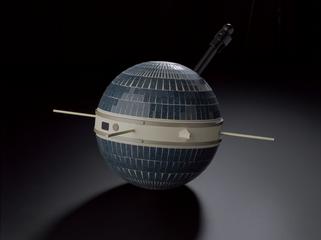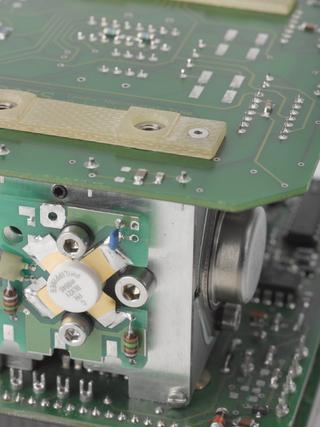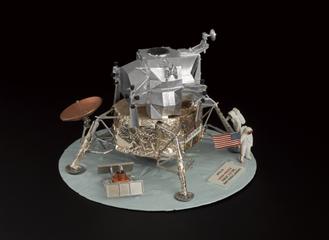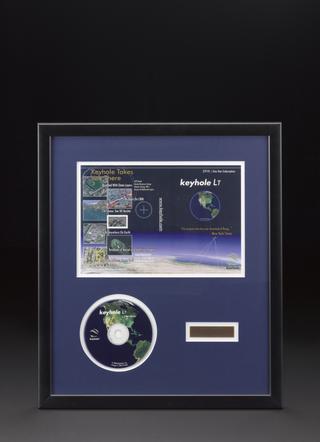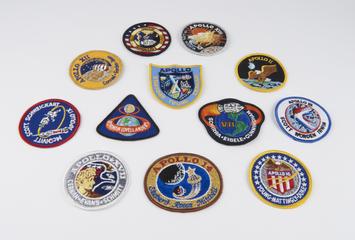
Beagle 2 Mars lander, 2002
- Made:
- 2002 in Milton Keynes
Beagle 2 Mars lander, model (scale 1:1). Spacecraft developed by Open University Planetary and Space Sciences Research Institute (PSSRI), Milton Keynes, UK, 2002.
Britain’s Beagle 2 lander launched to Mars on 2 June 2003 aboard the European Space Agency’s Mars Express. The lander's aim was to search the Martian soil and atmosphere for signs of carbon that would indicate life. Beagle was deployed to the Martian surface and scheduled to land on 25 December 2003. Unfortunately, it never made contact after deployment and after repeated attempts to locate it, Beagle was declared lost in February 2004.
In January 2015, however, NASA's Mars Reconnaissance Orbiter released high resolution images which showed the lander on the Mars surface and - critically - intact. It seems likely that one or more of Beagle's solar panels did not deploy. This meant the radio transmitter was not able to send and receive data from Earth.
Landing on any planetary body is incredibly difficult so the fact that Beagle 2 managed to achieve a soft landing is a success in itself. But the innovations the Beagle team made in miniaturising technology – especially the spacecraft’s gas analysis package – have been adapted for future missions and uses on Earth.
Details
- Category:
- Space Technology
- Object Number:
- 2007-8
- type:
- spacecraft
- credit:
- The Open University on behalf of the Beagle 2 Project
